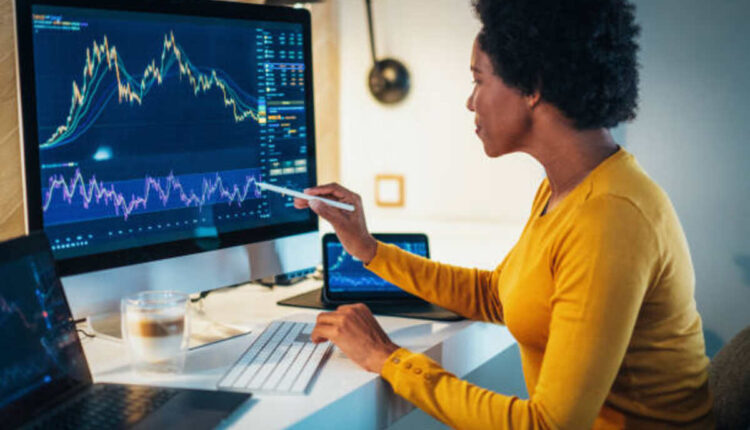Forex trading online offers an exciting and potentially rewarding investment opportunity; however, it comes with significant financial risk and may not suit every investor. Learn how to reduce that risk by making informed decisions and remaining disciplined in your approach. Read the Best info about forex robot.
Currencies are always quoted in pairs, each consisting of one currency and its counterpart currency. Each pair can be identified using a three-letter code; two letters represent its region while the third letter stands in for the actual currency itself.
It is a 24-hour market
Forex is a 24-hour market due to the different time zones involved, making trading possible all around the clock across Australia, Asia, Europe, and North America simultaneously. Overlapping sessions offer traders an opportunity to exploit volatility and increase trading profits.
All foreign exchange trades involve two currencies and are quoted in pairs; EUR/USD is one such pair. Each currency also has an “ask” price and an “offer price”, the latter of which refers to what price you must pay when buying, while the former gives buyers the ability to sell.
Forex, unlike stocks, bonds, and mutual funds, is an over-the-counter market that allows traders to speculate on foreign currency prices without owning any underlying assets. Leverage allows traders to maximize returns but increases risk. Due to its highly unpredictable nature, forex trading requires you to learn how to manage risk effectively before diving in; new investors should seek professional advice before beginning.
It offers a wide range of trading options
Forex trading is a form of market speculation involving exchanging one currency for another. To trade successfully, a pair of currencies must first be selected before determining whether to buy or sell them. Currency prices fluctuate due to various influences like interest rates, economic data, and political events; as a forex trader, you aim to take advantage of such fluctuations and make a profit off them.
Leverage is an essential aspect of forex trading, enabling traders to trade with larger amounts than their actual account balance. But be wary – trading using leverage can lead to both big gains and big losses – so always choose a broker regulated by a Tier-1 regulator such as UK FCA, CySEC, ASIC, or NFA for your best trading experience.
IG offers a comprehensive range of CALL and PUT options, as well as straddles, strangles, risk reversals, spreads, and more. In addition, you can access charting tools, market analysis, and news updates.
It is a speculative market
Forex trading is an increasingly popular way of trading currency price movements. Traders make predictions based on political and economic events as well as fundamental and technical analysis when making trading decisions; they also consider exchange rate effects on global business operations and inflation rates when making these choices.
Forex trading involves purchasing one currency and selling another. Each pair of currencies is represented by a quote with ask and bid prices; ask is the asking price, and bid is the selling price. Various forms of forex such as spot forex, forwards, or futures trading as well as contracts for difference (CFDs) allow traders to speculate on price without owning an asset directly.
Forex trading offers many benefits, including minimal margin requirements and leverage; however, it can also exacerbate losses. Therefore, traders must create a solid plan and understand any associated risks before venturing into this arena.
It is a leveraged market
Forex trading is a highly leveraged market, meaning traders can borrow capital to place larger trades. Leverage can be an extremely powerful tool when used correctly; however, misapplication can result in losses. To make the most of leverage use, traders need to understand how much margin is necessary per trade – usually just a fraction of its total value.
Forex markets use large amounts of leverage – up to 100:1. While this might appear intimidating to new traders, forex prices typically fluctuate less than 1% per day so limiting risk using stop-loss orders should not be difficult.
Traders choose their level of leverage based on their risk tolerance and trading style. Conservative investors or those just getting started may prefer lower ratios such as 5:1 or 10:1, while account type can also impact this decision – some brokers offer low leverage ratios specifically designed for traders who do not wish to risk their entire deposit amount.
It is a regulated market
Forex trading is overseen by various global governing and independent bodies to ensure transparency and accountability, setting standards that forex brokers must abide by; should any breach occur they take action immediately to punish brokers if necessary. Furthermore, traders can utilize various risk management tools such as stop-loss orders and take-profit orders to help manage risk more efficiently.
Currency prices are determined by supply and demand, which in turn is affected by factors like interest rates, inflation, central bank policy, and economic growth. The forex market stands out by trading lots – groups of currency used to standardize transactions – each lot being worth 100,000 units of currency; traders can also trade mini and micro lots if desired.
Traders can make money trading currencies that they think will appreciate and selling those they anticipate losing value, respectively. To do this successfully, they need to understand what a currency pair is. A currency pair consists of two currencies that each have their own buy and sell prices: these prices are called ask prices and bid prices respectively.


